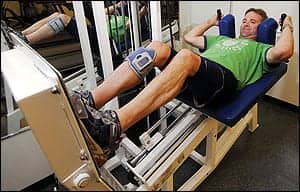Large doses of vitamin D supplements were no better at preventing falls in people age 70 and older than low doses. They could possibly even raise the fall risk, Lawrence Appel, MD, MPH, director of the Johns Hopkins Welch Center for Prevention, Epidemiology and Clinical Research, and his team suggest, in the Annals of Internal Medicine.
The study, funded by the National Institute on Aging, suggests that 1,000 or more international units per day (IU/day), equivalent to 25 micrograms/day of vitamin D, were no better than 200 IU/day at preventing falls, a dose about half of the typical amount in multivitamins, according to a media release from Johns Hopkins Medicine.
“There’s no benefit of higher doses but several signals of potential harm. A lot of people think if a little bit is helpful, a lot will be better. But for some vitamins, high-dose supplements pose more risks than benefits. There’s a real possibility that higher doses of vitamin D increase the risk and severity of falls.”
— Lawrence Appel, MD, MPH, the C. David Molina, MD, MPH Professor of Medicine with joint appointments in epidemiology, international health and nursing
STURDY Trial Delves Into Vitamin D and Fall Risk
Preliminary studies show that vitamin D may increase muscle strength and improve balance. Appel notes in his study, called STURDY [Study To Understand Fall Reduction and Vitamin D in You], that vitamin D supplement doses of 2,000 and 4,000 IU/day appeared to increase the risk of falls compared with 1,000 IU/day, a relatively common dose for a pure vitamin D supplement.
In addition, serious falls and falls with hospitalization occurred more frequently in persons assigned to 1,000 or more IU/day compared with those assigned to 200 IU/day.
The trial had two phases. During the first phase, known as the dose-finding phase, participants were assigned to one of four doses of supplemental vitamin D: 200 IU/day (the control dose), 1,000 IU/day, 2,000 IU/day and 4,000 IU/day.
In the first phase, the fall rates in the three higher-dose groups were compared to see which of the higher doses had the lowest fall rate. The 1,000 IU/day dose group had a lower fall rate than the 2,000 IU/day and 4,000 IU/day groups, so it was identified in the first phase as the dose to test in the second phase, also called the confirmatory phase.
In the confirmatory phase, the fall rate in the higher-dose group (1,000 IU/day) was compared with the fall rate in the control group (200 IU/day). The team found that 1,000 IU/day of vitamin D was no better than 200 IU/day at preventing falls, the release explains.
Recommendations
Appel recommends that seniors discuss their fall risk and vitamin D level with their doctors and decide whether or not to continue vitamin D supplements.
[Source(s): Johns Hopkins Medicine, EurekAlert]
Related Content:
Fall Risk Reduction in Seniors – with Wav Balance Training
Fall Risk and Fall Prevention in Older Adults
Sarcopenic Obesity May Affect Fall Risk Among Postmenopausal Women





